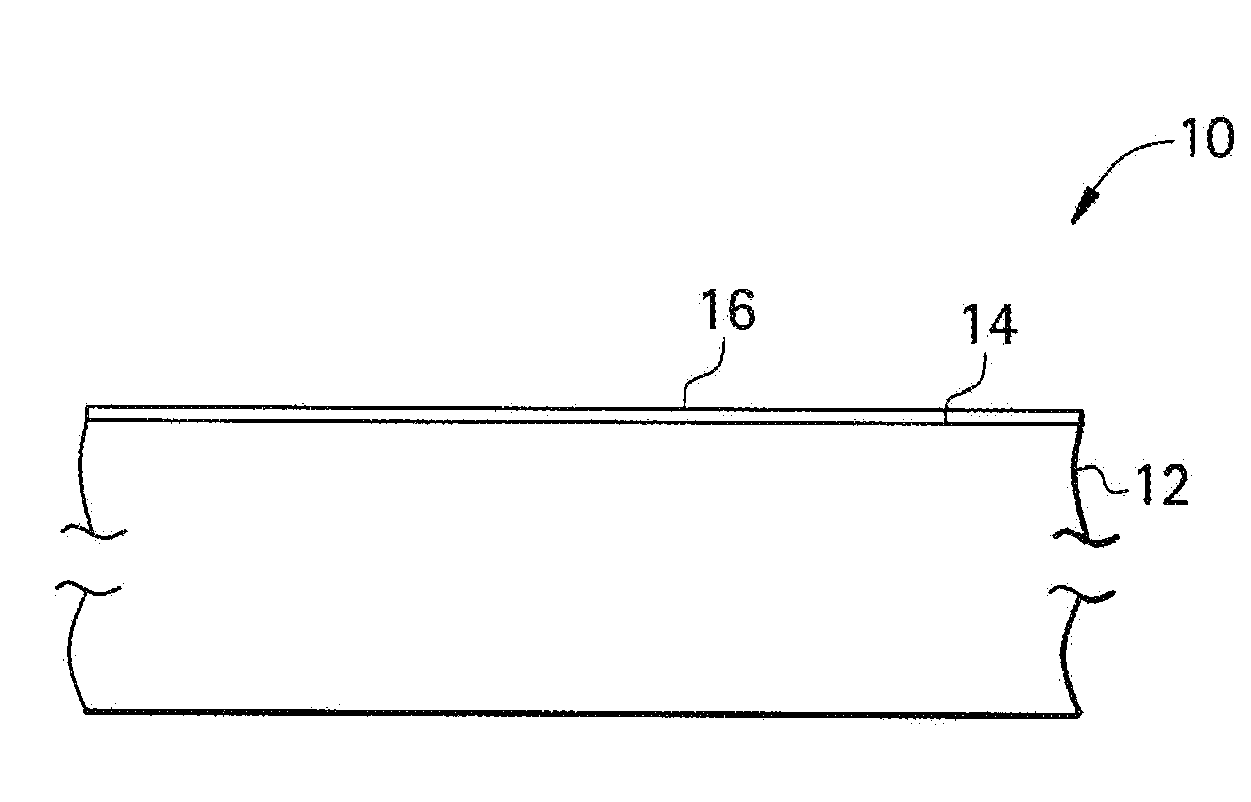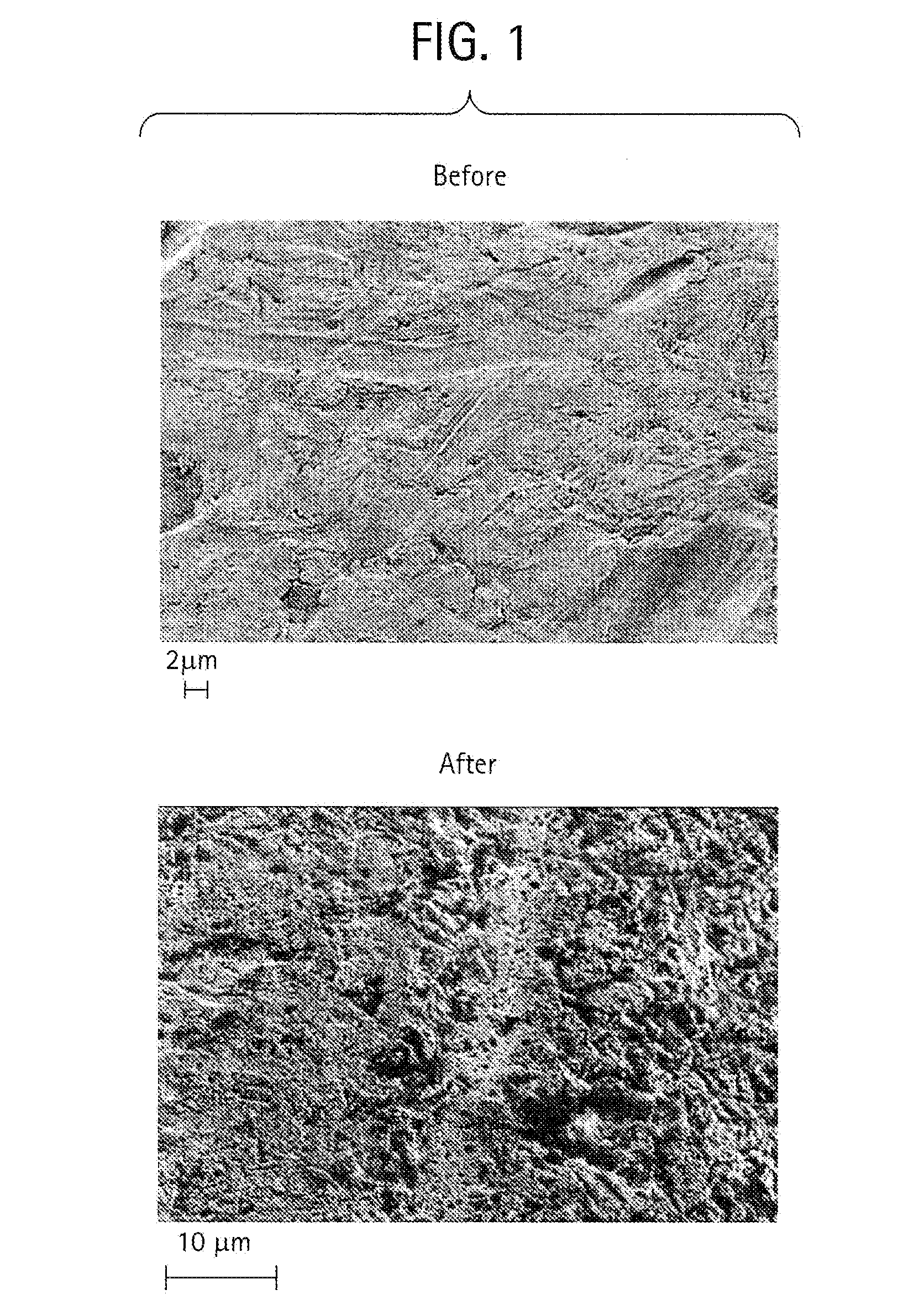Surface Treatments for Turbine Components to Reduce Particle Accumulation During Use Thereof
a turbine and surface treatment technology, applied in the direction of liquid fuel engine components, wind turbines with parallel air flow, perpendicular air flow, etc., can solve the problems of frequent maintenance related shutdown of turbine components, lack of erosion or corrosion resistance of martensitic stainless steel, etc., and achieve the effect of preventing micropitting
- Summary
- Abstract
- Description
- Claims
- Application Information
AI Technical Summary
Benefits of technology
Problems solved by technology
Method used
Image
Examples
Embodiment Construction
[0017]It has been discovered through characterization of fouled turbine components that sand accumulates in micropits formed as a result of the impact of particles, e.g., sand. For example, FIG. 1 illustrates a turbine component surface and the extent of micropit formation caused by the impact of sand particles. FIG. 1 provides a surface comparison of a new turbine blade component relative to a used turbine blade component subjected to sand fouling, wherein both surfaces were treated with the same cleaning solution to remove buildup from the surface. Evidence of micropitting was clearly distinguishable in the surface of the used turbine blade component. Although not shown, prior to treatment with the cleaning solution to remove buildup, sand accumulation was evident on the surfaces of the used turbine blade component. Disclosed herein are surface treatments for a turbine engine component so as to reduce sand accumulation and / or erosion caused by the impact of particles on the turbin...
PUM
| Property | Measurement | Unit |
|---|---|---|
| thickness | aaaaa | aaaaa |
| thickness | aaaaa | aaaaa |
| sizes | aaaaa | aaaaa |
Abstract
Description
Claims
Application Information
 Login to View More
Login to View More - R&D
- Intellectual Property
- Life Sciences
- Materials
- Tech Scout
- Unparalleled Data Quality
- Higher Quality Content
- 60% Fewer Hallucinations
Browse by: Latest US Patents, China's latest patents, Technical Efficacy Thesaurus, Application Domain, Technology Topic, Popular Technical Reports.
© 2025 PatSnap. All rights reserved.Legal|Privacy policy|Modern Slavery Act Transparency Statement|Sitemap|About US| Contact US: help@patsnap.com



